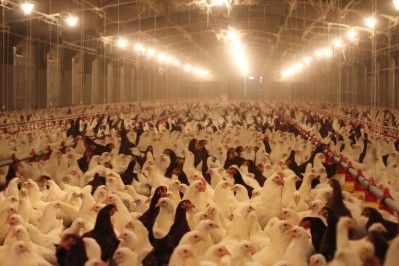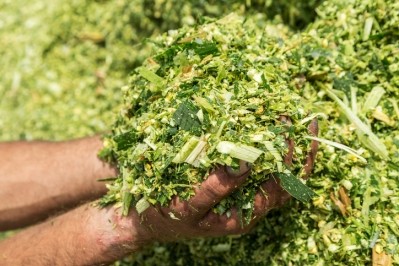Special Edition: Reports from IPPE
New feed phytate reference guide

Gilson Gomes, global technical manager with AB Vista, spoke to us about the guide at the International Processing and Packaging Expo (IPPE) in Atlanta.
It aims to help nutritionists and feed users looking to better understand the use of phytase with other feed ingredients, he said.
He said many of them didn’t have any idea how much of the phytate they have in their raw materials. Without such information, it is hard to know the correct amount of phytase to use in a diet, he said. “We’re trying to help them to save money on formulation – because that is the ultimate goal,” he added.
The guide is based on research work that began in 2010, and includes sample averages for phytic-P or phytate levels found in common feed ingredients for multiple years, multiple countries, including the US, Brazil, Canada and Mexico, and various feed ingredients, including corn, sorghum, wheat and soybean meal.
The tools is a starting point for feed formulations, said Gomes.
Variation in phytate levels in feed materials
One aspect of phytate to remember is that levels can vary among feed ingredients, he said.
“It’s not a fixed number, this is what we’d like customers to understand, there is a certain variation,” he said. “Depending on the crop, depending on the region, depending on some other factors this phytate content varies.”
Feeds with animal by-products are likely to have less phytate and those including DDGS could see wider variation stemming from the fermentation process used to generate the feed ingredient.
The process, however, is an attempt to ensure feed formulations don’t have excess or inadequate levels of phytase. “You lose money either way,” he added.
“Nutritionists are horrified if they go above or make a mistake, so this service is to be really risk-free,” he said. “It is to tailor their recommendation and then take most advantage of that approach.”
To establish the guide thousands of samples of feed ingredients were analyzed through “wet chemistry,” to establish needed datasets, he said. “This is just the tip of the iceberg in terms of what we can offer in terms of NIR [near-infrared],” he added.
“It’s not only phytate, we can also analyze a lot of other parameters,” said Gomes. “We are emphasizing phytate now because really customers are requesting us to exploit more of the benefits of the phytate and obviously we’d like to offer something that gives them a more technical approach.”















